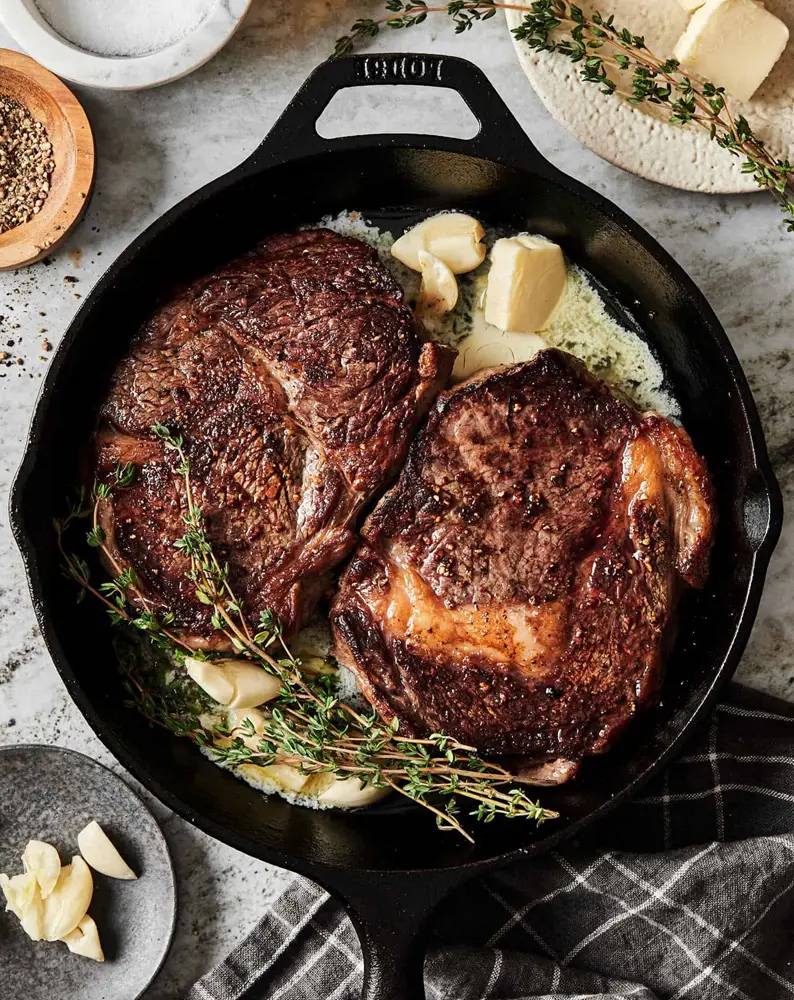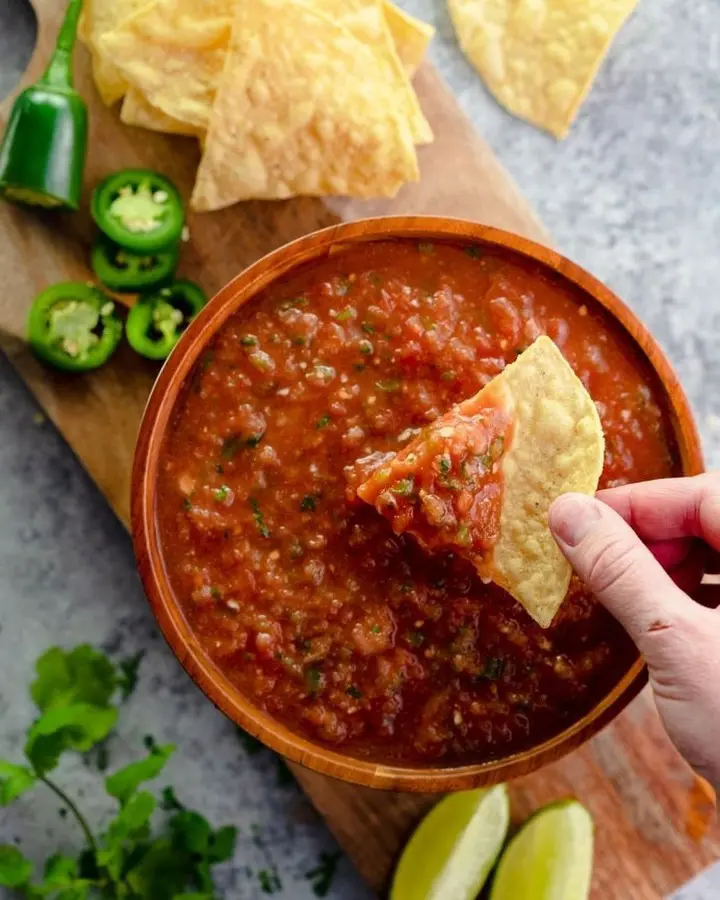Cooking the Perfect Steak Expert Tips and Recipes

There's nothing quite like a perfectly cooked steak. Whether you're a novice in the kitchen or a seasoned home cook, achieving that restaurant-quality steak can seem daunting.
This article will delve into everything you need to know about steak recipes, how to cook steak the cheffy way, what you need for steak cooking, essential tips, what to serve with steak and other delicious steak options.
By the end, you'll be well-equipped to impress your family and friends with a steak that's cooked to perfection.
Types of Steak Cuts
Before diving into the cooking process, it's essential to understand the different cuts of steak available. Each cut has unique characteristics, and choosing the right one can make a significant difference in the final result.
- Ribeye: Known for its rich marbling and intense flavor, the ribeye is a favorite among steak lovers. It's tender, juicy, and ideal for grilling or pan-searing.
- Filet Mignon: Cut from the tenderloin, this steak is incredibly tender and lean. It's prized for its melt-in-the-mouth texture and is best cooked to medium-rare.
- New York Strip: This cut, also known as the strip steak, is flavorful and slightly less tender than the ribeye. It's a great choice for grilling.
- T-Bone/Porterhouse: Featuring both the strip steak and tenderloin, this cut offers the best of both worlds. It's perfect for those who want a bit of everything.
- Sirloin: Leaner than ribeye or strip, sirloin is still flavorful and more affordable. It's versatile and can be grilled, broiled, or pan-seared.
- Flank Steak: Known for its intense beefy flavor, flank steak is lean and best when marinated and cooked quickly at high heat.
Preparing for the Perfect Steak
When selecting your steak, look for the following qualities:
- Marbling: Intramuscular fat adds flavor and tenderness. The more marbling, the better.
- Thickness: A thickness of 1 to 1.5 inches is ideal for achieving a good crust while keeping the interior juicy.
- Color: Fresh beef should be bright red. Avoid steaks with grayish-brown discoloration.
Essential Tools
Having the right tools can make a significant difference in your steak-cooking experience:
- Cast Iron Skillet: Retains heat well and creates a beautiful sear.
- Tongs: Essential for flipping the steak without piercing it and losing juices.
- Meat Thermometer: Ensures precise cooking and helps achieve the desired doneness.
- Cutting Board and Knife: For slicing and serving the steak.
- Cooking Steak: The Chef's Way
Seasoning the Steak
A well-seasoned steak is the foundation of a delicious meal. Here's how to do it:
- Salt: Generously salt both sides of the steak at least 40 minutes before cooking. This allows the salt to penetrate the meat and enhances flavor.
- Pepper: Freshly ground black pepper adds a nice kick. Apply just before cooking to avoid burning.
- Optional Seasonings: Garlic powder, onion powder, and smoked paprika can add depth to the flavor profile.
Cooking Methods

Pan-Searing
Pan-searing is a straightforward and effective method of cooking steak at home:
- Preheat the Skillet: Heat your cast iron skillet over high heat until smoking hot.
- Add Oil: Use a high smoke point oil like canola or grapeseed oil. Avoid olive oil as it can burn at high temperatures.
- Sear the Steak: Place the steak in the skillet and let it sear without moving for 2-3 minutes until a crust forms. Flip and sear the other side for another 2-3 minutes.
- Butter Baste: Add a knob of butter, crushed garlic cloves, and fresh thyme or rosemary to the skillet. Tilt the skillet and spoon the melted butter over the steak continuously for added flavor and moisture.
- Check Doneness: Use a meat thermometer to check the internal temperature. For medium-rare, aim for 130°F (54°C).
Grilling
Grilling imparts a smoky flavor that many steak lovers crave:
- Preheat the Grill: Get your grill hot, around 450-500°F (232-260°C).
- Oil the Grates: Prevent sticking by oiling the grates with a paper towel dipped in oil.
- Grill the Steak: Place the steak on the grill and sear each side for 3-4 minutes. Move to a cooler part of the grill to finish cooking if needed.
- Check Doneness: Use a meat thermometer to ensure accurate cooking.
Reverse Searing
This technique involves slow cooking followed by a high-heat sear:
- Preheat the Oven: Set your oven to 275°F (135°C).
- Cook the Steak: Place the steak on a wire rack over a baking sheet and cook in the oven until the internal temperature reaches 10-15 degrees below your desired doneness.
- Sear the Steak: Heat a cast iron skillet and sear each side of the steak for 1-2 minutes until a crust forms.
Steak Cooking Tips
Resting the Steak
Resting the steak after cooking is crucial for ensuring a juicy and flavorful result. When a steak cooks, the juices are pushed towards the center. By letting the steak rest, the juices have time to redistribute throughout the meat.
This results in a more evenly moist steak. To rest your steak properly, remove it from the heat and tent it loosely with foil for at least 5-10 minutes. This simple step can make a significant difference in the final texture and taste of your steak.
Slicing the Steak
Slicing the steak correctly is just as important as cooking it right. Always slice against the grain of the meat. The "grain" refers to the direction in which the muscle fibers run. Cutting against the grain shortens these fibers, making the steak more tender and easier to chew.
This technique enhances the overall eating experience, ensuring each bite is as tender as possible.
Achieving Desired Doneness
Cooking a steak to the desired doneness requires attention to internal temperature. Here are the general temperature guidelines:
- Rare: 120-130°F (49-54°C) – Cool red center
- Medium-Rare: 130-135°F (54-57°C) – Warm red center
- Medium: 135-145°F (57-63°C) – Warm pink center
- Medium-Well: 145-155°F (63-68°C) – Slightly pink center
- Well-Done: 155°F (68°C) and above – Little to no pink
Using a meat thermometer can help achieve these precise temperatures, ensuring your steak is cooked exactly how you like it.
Enhancing Flavor
To elevate your steak's flavor, consider adding compound butter or a balsamic reduction. Compound butter is butter mixed with herbs, garlic, or spices, which can be placed on the hot steak to melt and infuse it with rich, complementary flavors.
Alternatively, a drizzle of high-quality balsamic reduction can add a sweet and tangy contrast that enhances the savory taste of the steak. These simple additions can transform a good steak into a gourmet experience.
What to Serve with Steak
A perfectly cooked steak deserves equally delightful sides. Here are some classic and creative options:
Classic Sides
- Mashed Potatoes: Creamy and buttery, they complement the richness of the steak.
- Grilled Vegetables: Asparagus, bell peppers, and zucchini add color and freshness.
- Creamed Spinach: Rich and creamy, it pairs well with a juicy steak.
- Garlic Bread: Crunchy and flavorful, perfect for soaking up steak juices.
Creative Sides
- Roasted Brussels Sprouts with Bacon: Adds a smoky, savory element.
- Truffle Mac and Cheese: A luxurious twist on a comfort classic.
- Sweet Potato Fries: Offers a sweet contrast to the savory steak.
- Cauliflower Gratin: A lighter, yet indulgent side.
Salads
- Caesar Salad: Crisp and tangy, a classic choice.
- Arugula Salad: Peppery arugula with a lemon vinaigrette cuts through the richness of the steak.
- Caprese Salad: Fresh tomatoes, mozzarella, and basil add a refreshing touch.
Other Options for Steak

Steak Sauces
Enhance your steak with a variety of sauces:
- Béarnaise Sauce: Rich and buttery with a hint of tarragon.
- Chimichurri: A zesty Argentine sauce made with parsley, garlic, vinegar, and oil.
- Peppercorn Sauce: Creamy with a kick of black pepper.
- Red Wine Reduction: Deep and flavorful, perfect for special occasions.
Steak Marinades
Marinating can add depth of flavor and tenderness to your steak:
- Soy-Ginger Marinade: Adds an umami kick.
- Garlic-Herb Marinade: Classic and aromatic.
- Balsamic-Rosemary Marinade: Sweet and savory with a hint of woodsy rosemary.
Steak Alternatives
For a twist on traditional steak, consider these alternatives:
- Bison Steak: Leaner than beef but rich in flavor.
- Lamb Steak: Unique and flavorful, often served with mint sauce.
- Tuna Steak: A seafood option that's best served rare with a soy-based dipping sauce.
- Vegetarian Steak: Portobello mushrooms or cauliflower steaks are great for vegetarian guests.
Conclusion
Cooking steak like a chef is an art that involves understanding the cuts, perfecting your seasoning, mastering various cooking techniques, and pairing the steak with complementary sides and sauces.
By following these tips and techniques, you'll be well on your way to creating a steak dinner that's worthy of a fine dining experience in the comfort of your own home.
So fire up your grill or heat up your skillet, and get ready to impress with your newfound steak-cooking skills.







